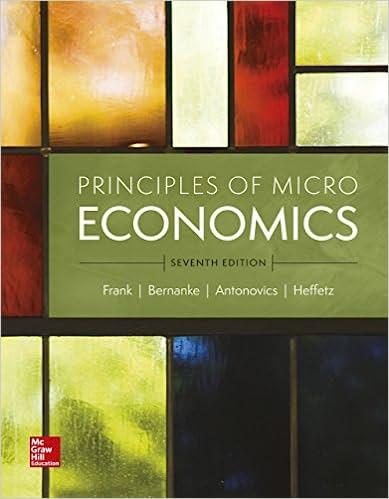




answer these case study questions
Question: 2. Which of the following two statements involves positive economic analysis and which normative? How do the two kinds of analysis differ? a) Gasoline rationing (allocating to each individual a maximum amount of gasoline that can be purchased each year) is a poor social policy because it interferes with the workings of the competitive market system. b) Gasoline rationing is a policy under which more people are made worse off than are made better off. Case Study: Chapter 1 covers basic concepts students first saw in their introductory course but could bear some repeating. Since most students will not have read this chapter before the first class, it is a good time to get them talking about some of the concepts presented. You might start by asking for a definition of economics. Make sure to emphasize scarcity and trade-offs. Remind students that the objective of economics is to explain observed phenomena and predict behavior of consumers and firms as economic conditions change. Ask about the differences (and similarities) between microeconomics and macroeconomics and the difference between positive andnormative analysis. Review the concept of a market and the role prices play in allocating resources. Discussions of economic theories and models may be a bit abstract at this point in the course, but you can lay the groundwork for a deeper discussion that might take place when you cover consumer behavior in Chapter 3. Section 1.3 considers real and nominal prices. Given the reliance on dollar prices in the economy, students must understand the difference between real and nominal prices and how to compute real prices. Most students know about the Consumer Price Index, so you might also mention other price indexes such as the Producer Price Index and the Personal Consumption Expenditures (PCE) Price Index, which is the Fed's preferred ination measure.1 It is very useful to go over some numerical examples using goods that are in the news and/or that students often purchase such as gasoline, food, textbooks, and a college education. In general, the rst class is a good time to pique student interest in the course. It is also a good time to tell students that they need to work hard to learn how to do economic analysis, and that memorization alone will not get them through the course. Students must learn to think like economists, so encourage them to work lots of problems. Also encourage them to draw graphs neatly and large enough to make them easy to interpret. It always amazes me to see the tiny, poorly drawn graphs some students produce. It is no wonder their answers are often incorrect. You might even suggest they bring a small ruler and colored pencils to class so they can draw good diagrams
















